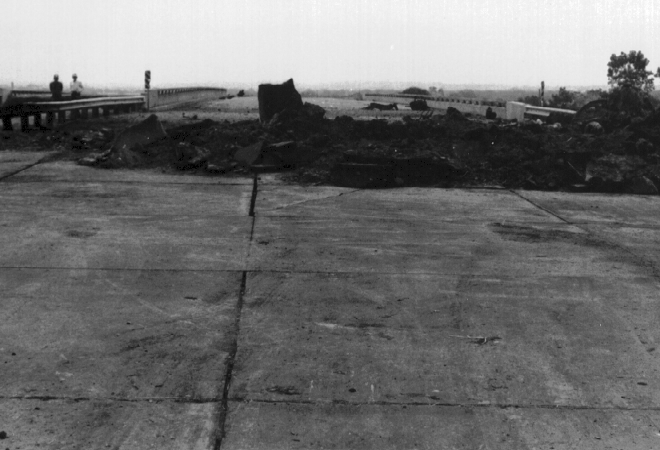At the CNO Executive Board briefing of 29 March 1984, Adm. Watkins also directed RAdm. Meyer to make sure that our allies were well aware of the U.S. Navy Insensitive Munitions policy and what we were doing to meet the goals. Adm. Watkins feared that the U.S. Navy could spend a great deal of money in developing insensitive munitions and then, in case of a war, be forced to use munitions produced by our allies that did not meet our standards.
As a result, Dr. Ottmar Dengel of NSWC, White Oak, MD and I traveled to selected Allied countries and presented the U.S. Navy Insensitive Munitions policy and the program objectives. Over a period of time, we presented the Navy Insensitive Munitions program and its objectives to the Defense Ministries in Canada, France, Germany, Norway, The Netherlands, and The United Kingdom.
We soon realized that the U.S. Navy IM policy was unique and that the Defense Ministries in the countries we visited were only marginally interested in the concept. None of the other countries, except possibly the U.K., had experienced disastrous incidents like the USS FORRESTAL, USS ENTERPRISE, or USS NIMITZ flight deck fires and munition explosions. It appeared that the operating forces in these nations might not be interested in the IM concept. Thus, the NATO arena appeared to be the most appropriate place for us to focus our attention.
On 2 October 1984, we presented the Navy IM policy and program to the NATO Action Committee 310 (AC/310) Sub Group I at their 10th meeting held at the “Etablissment Technique de Bourges”, Bourges, France. AC/310 is the Group on Safety and Suitability for Service of Munitions and Explosives. It is one of the cadre groups answering to the NATO Conference of National Armaments Directors, CNAD.
The AC/310 consists of a Main Group and four Subgroups: Subgroup I (Explosive Materials), Subgroup II (Fuzing Systems), Subgroup III (Environment), and Subgroup IV (Munitions Systems). The Main Group oversees the work of the four subgroups.
Gen. Michel Thevenin of the French “Service Technique Des Poudres et Explosifs” (STPE) was the Chairman of the AC/310 Cadre Group at that time. He made arrangements for us to brief the U.S. Navy’s Insensitive Munitions program in the Ministry of Defense in Paris, France. The briefing was presented in the SNPE Headquarters conference room on 2 May 1985 and was attended by members of the French Ministry of Defense, SNPE and other French companies.
Shortly after the Paris meeting, Gen. Thevenin established the French Munition a Risque Attenuée, “MURAT”, program and he became a strong supporter of the IM concept in NATO. Dr. Ron Derr of the Naval Air Warfare Center, China Lake, CA. was the U.S. Principal Representative to the AC/310 Cadre Group at that time. He joined Gen. Thevenin in the effort to introduce an IM technology information exchange program in NATO.
Meanwhile, on 4 August 1985, there was another incident that focused attention on the sensitivity of U.S. Air Force tritonal loaded bombs produced by the Navy. A tractor-trailer carrying ten MK-84 (2000 lbs) General Purpose bombs was involved in a collision near the Naval Ammunition Depot, McAlester, OK. A fire ensued which lasted about 35 minutes. Heat from the fire caused three separate explosions. A crater 28 feet wide by 27 feet deep was formed in highway I-40 outside of Checotah, OK. Fragments were scattered over a radius of 990 feet. Fifty-one persons were injured in the incident. Fortunately, there were no fatalities.
